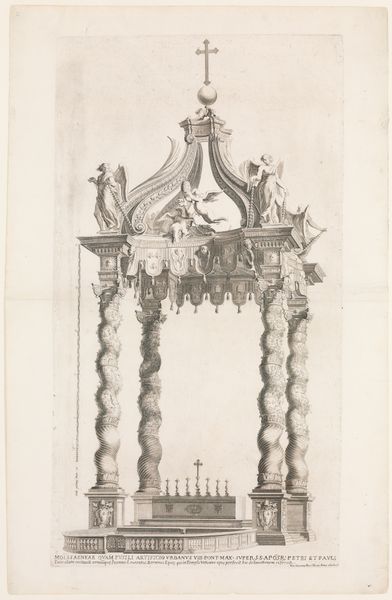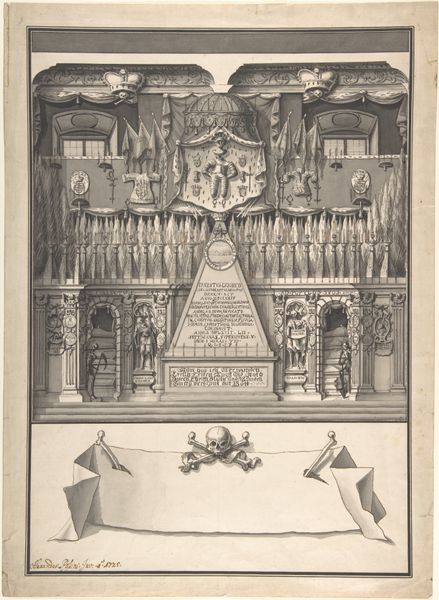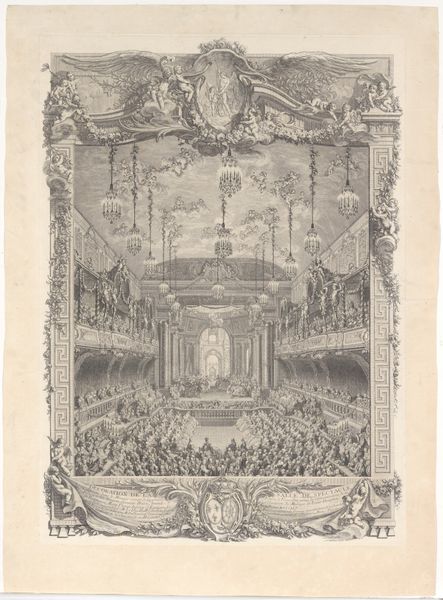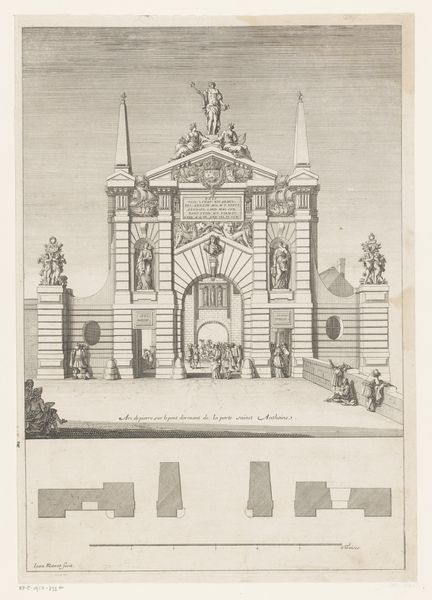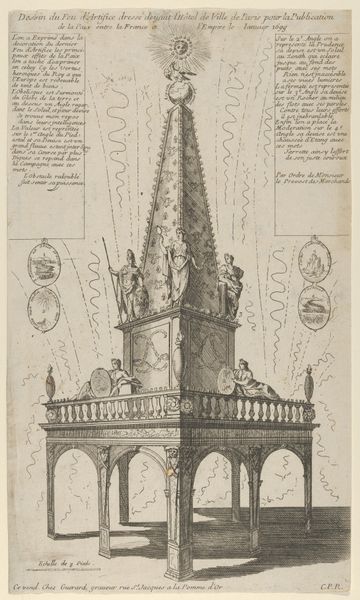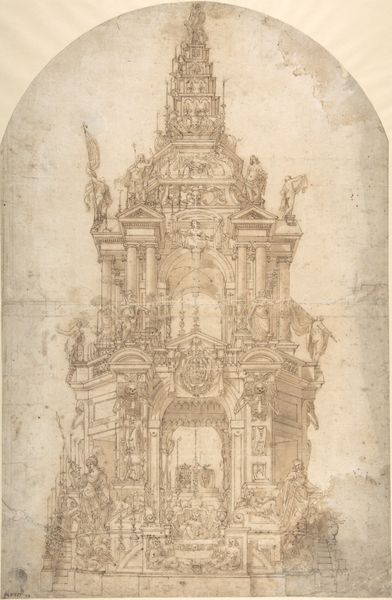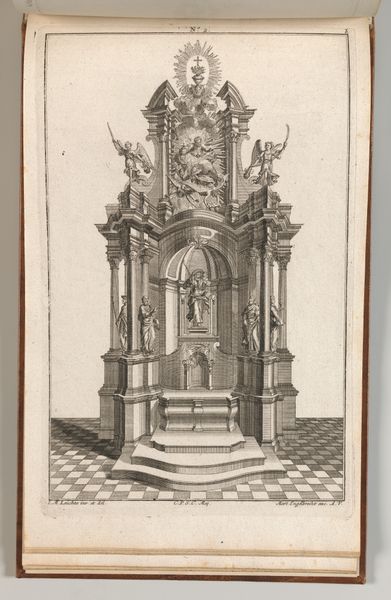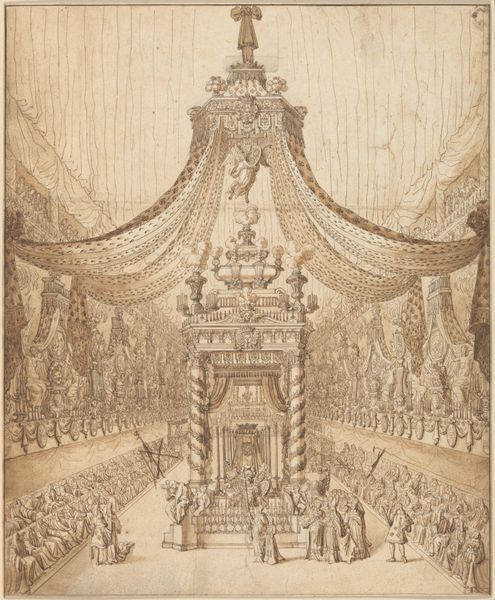
Catafalque for Rudolf II of Austria 1612 - 1620
0:00
0:00
drawing, print, engraving, architecture
#
portrait
#
drawing
#
medieval
# print
#
human-figures
#
cross
#
arch
#
engraving
#
architecture
Dimensions: Sheet (Trimmed): 11 7/16 × 7 9/16 in. (29 × 19.2 cm)
Copyright: Public Domain
Editor: This is Giovanni Maria Filippi’s "Catafalque for Rudolf II of Austria," created between 1612 and 1620. It's an engraving, a drawing turned print, depicting an elaborate memorial. The sheer grandeur is overwhelming, almost theatrical. What strikes you most about this piece? Curator: I see a powerful statement about the performance of power itself. Catafalques, traditionally temporary structures for funeral rites, became potent symbols. This print, specifically, begs the question: Who is constructing this image of Rudolf II and for what purpose? What narrative are they trying to create? Editor: A narrative? Could you elaborate? Curator: Consider the context: Rudolf II’s reign was marked by political instability, religious conflict, and ultimately, his deposition. This elaborate display, rendered as a print for wider distribution, feels like an attempt to solidify, or perhaps even rehabilitate, his image after his death. The artist uses classical motifs – columns, arches – symbols of established authority. But the theatrical excess also hints at a certain fragility, wouldn't you say? It suggests anxieties about legitimacy. Editor: That makes sense. The excess does seem…compensatory. Curator: Exactly! And let's consider the audience. Who were these prints meant for? Were they intended to sway public opinion, reassure the aristocracy, or perhaps even send a message to the new emperor? By examining this work, we uncover layers of political maneuvering, religious tension, and the strategic use of visual imagery to shape historical memory. How does that reframing sit with you? Editor: It really shifts my understanding! I was focused on the aesthetic, but it's much more about the political and social climate of the time. The artwork then speaks beyond its surface beauty. Curator: Indeed. It invites us to question the motivations behind such grand displays of mourning and their enduring impact on how we remember historical figures.
Comments
No comments
Be the first to comment and join the conversation on the ultimate creative platform.

